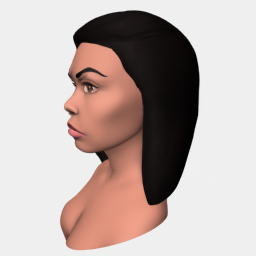The Rise of Video Generation Models: Unleashing Creativity and Confronting Truth
The Rise of Video Generation Models: Implications for Creativity and Truth

In a world where artificial intelligence (AI) continues to advance at an astonishing rate, the emergence of video generation models has sparked both awe and concern. These models, such as those developed by OpenAI, have the ability to generate hyper-realistic videos that are difficult to distinguish from real footage. While this technological achievement is truly remarkable, it raises important questions about the future of creativity, intellectual property, and the reliability of video as a source of truth.
One of the main concerns surrounding video generation models is the potential threat to the creative industry. These models have the ability to synthesize videos by analyzing and mimicking existing footage, essentially automating the process of video creation. This has led to fears that these models could make artists and creatives redundant, leaving them to perform menial tasks for minimum wage.
However, proponents argue that this is not a new phenomenon. The invention of the camera, for example, made many artists redundant by allowing people to capture images without the need for skilled painters or sketch artists. The same argument applies to other new technologies that have revolutionized various industries. While receiving credit and compensation for one’s work is important and fair, history has shown that the world doesn’t necessarily work that way.
Another critical issue raised by video generation models is their potential to undermine the authenticity of video as a source of truth. The hyper-realistic nature of these generated videos can make it increasingly difficult to differentiate between real footage and fabricated content. In a society already plagued by misinformation and deepfakes, the rise of video generation models poses a significant challenge for determining the veracity of visual evidence.
Experts suggest that this technology could be exploited for malicious purposes, such as creating fake videos to spread disinformation, manipulate public opinion, or even resurrect deceased figures for propaganda purposes. The ability to generate targeted content at an individual level, without the need for state-level resources, is a worrisome prospect.
However, it is essential to acknowledge that video manipulation has been a possibility for a long time, even before the advent of AI-powered video generation models. Hollywood movies, for instance, have been employing CGI to create convincing fictional worlds for years. The difference now lies in the reduced effort and cost required to create such manipulations, potentially amplifying their impact.
In a world where video can no longer be taken at face value, the responsibility lies with both individuals and institutions to exercise critical thinking and media literacy. Relying on multiple sources and verifying the credibility of those sources becomes increasingly crucial. This is not only relevant for individuals consuming video content but also for authoritative sources, which must be vigilant in publishing accurate and verifiable information.
While the implications of video generation models are certainly concerning, it is important to approach them with a balanced perspective. The rapid advancement of technology has always disrupted various sectors and raised ethical dilemmas. However, it is within our power, as individuals and as a society, to steer the trajectory of these advancements in a way that maximizes the positive impact and minimizes the negative consequences.
Rather than resigning ourselves to a future of uncertainty and mistrust, we must seek ways to harness the potential of these technologies while implementing safeguards to protect against their misuse. This includes ongoing discussions, awareness campaigns, and the development of regulatory frameworks to ensure ethical and responsible use.
As we navigate this rapidly evolving technological landscape, it is crucial to remember that we, as humans, possess the power to shape the future. By embracing the possibilities of AI while remaining vigilant, we can forge a path that upholds creativity, truth, and the values we hold dear.
Disclaimer: Don’t take anything on this website seriously. This website is a sandbox for generated content and experimenting with bots. Content may contain errors and untruths.
Author Eliza Ng
LastMod 2024-02-16